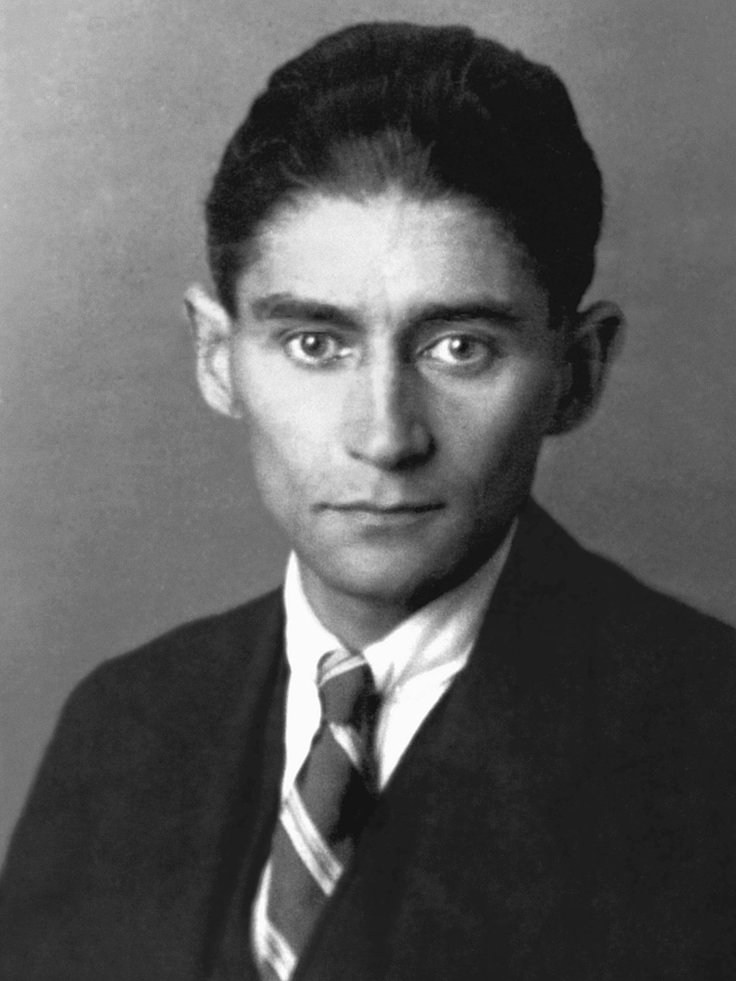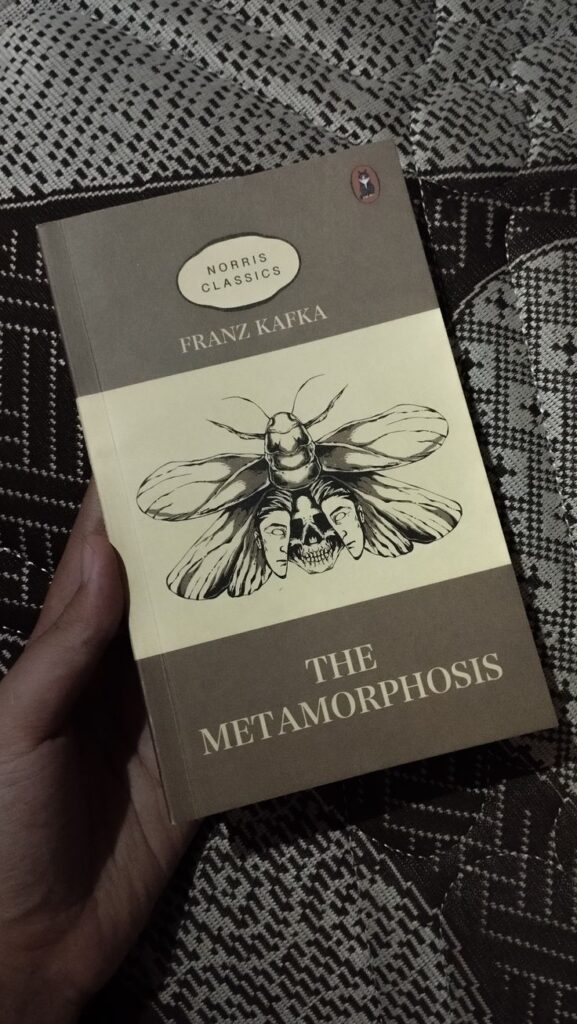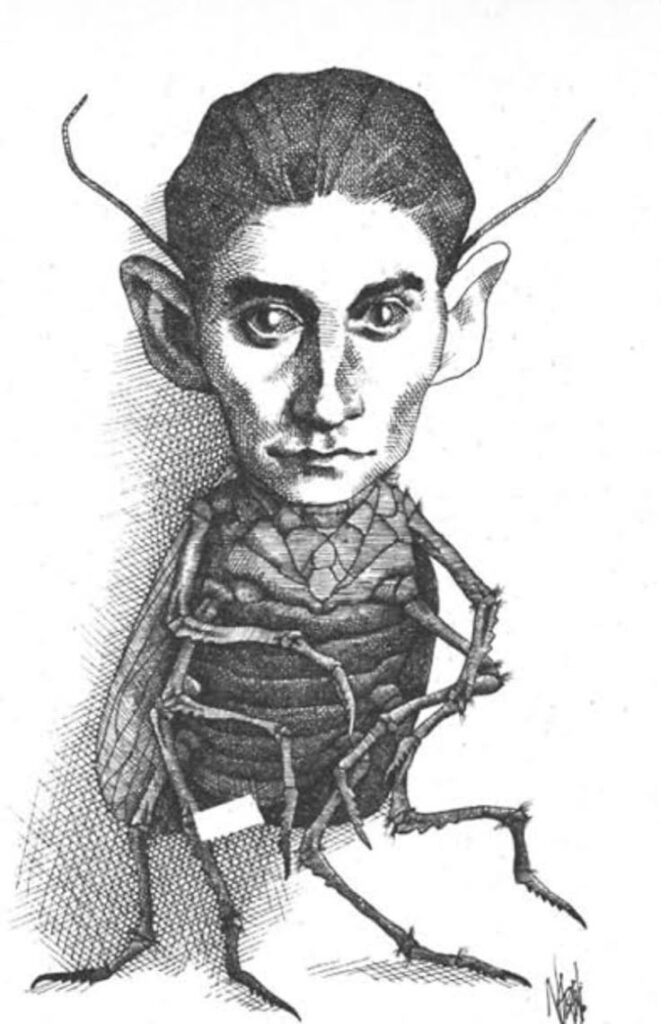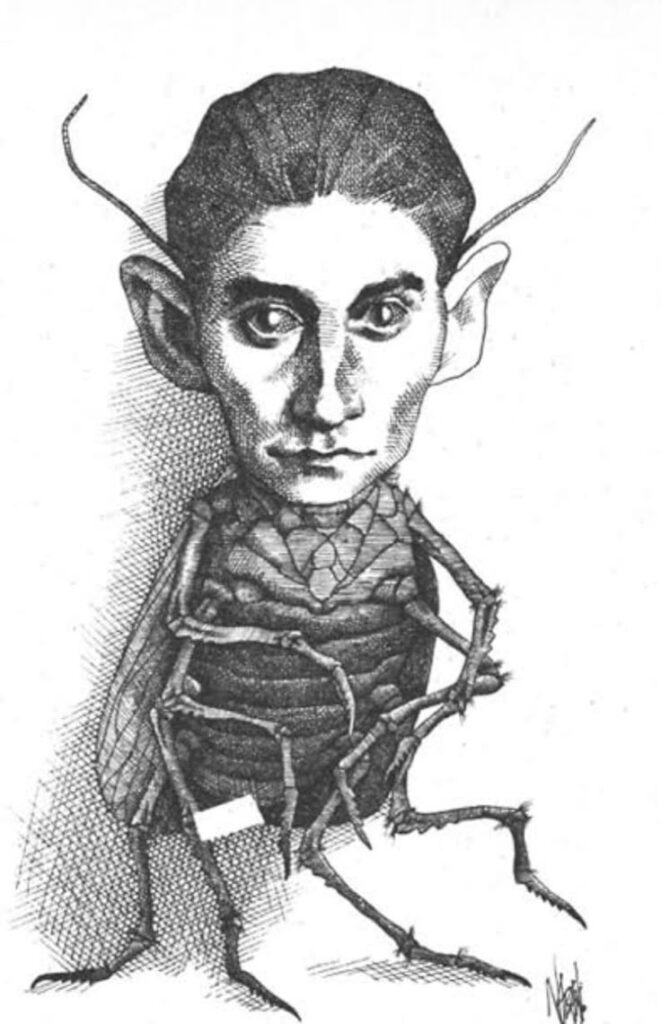Franz Kafka (1883–1924) remains one of the most enigmatic and fascinating authors of the 20th century. His works, often described as kafkaesque, capture the sense of alienation, helplessness, and absurdity that many still feel in the modern world.
But who was Kafka really, and why does his voice continue to resonate across cultures and generations?
“When Gregor Samsa woke up one morning from unsettling dreams, he found himself changed in his bed into a gigantic insect.”
A Brief Life Story

Kafka was born in Prague, then part of the Austro-Hungarian Empire, into a middle-class Jewish family. His father, Hermann Kafka, was a domineering and pragmatic man, while his mother was more reserved. This family environment deeply influenced Kafka’s psyche, leaving him with an enduring sense of inadequacy and fear of authority figures.
Despite training as a lawyer and working at an insurance company, Kafka saw writing as his true calling. Yet, he published only a few works during his lifetime and often doubted his own talent. On his deathbed, he even asked his close friend Max Brod to burn his manuscripts. Fortunately, Brod ignored this request — a decision that gifted the world some of the most powerful literary works ever written.
His Major Works
The Metamorphosis (1915): Perhaps his most famous novella, in which Gregor Samsa wakes up one morning transformed into a giant insect. This bizarre story captures themes of alienation, family rejection, and loss of identity.

- The Trial (1925): Published posthumously, it tells the story of Josef K., a man suddenly accused of a mysterious crime. The novel illustrates the nightmare of faceless bureaucracy and the absurdity of justice.
- The Castle (1926): Another posthumous novel, it follows a land surveyor who struggles endlessly to gain access to a mysterious authority in a village. The unfinished story symbolizes the unattainable quest for meaning and acceptance.
- Letters and Diaries: Kafka was also a prolific letter-writer. His letters to Felice Bauer, Milena Jesenská, and his Letter to His Father provide raw insights into his tormented inner life.
Kafka’s Thoughts and Philosophy
Kafka’s works reflect existential anxiety, the struggle with authority, and the absurdity of life’s structures. He once wrote:
“A book must be the axe for the frozen sea within us.”
This reveals his belief that literature should shock, awaken, and transform the reader.
Another famous line captures his view of human vulnerability:
“There are two cardinal human sins from which all others derive: impatience and laziness.”
He was also acutely aware of his own fragility, remarking in his diary:
“I am a cage, in search of a bird.”
Fascinating Curiosities

- Kafka wrote mostly at night, after finishing his long office hours. He often felt that writing was stealing hours from his own health and sanity.
- He was extremely self-critical and believed most of his work was unworthy of publication.
- He had a complex love life: his engagement to Felice Bauer collapsed twice, partly because of his obsessive need to write and his struggles with intimacy.
- Kafka suffered from tuberculosis, which eventually led to his early death at the age of 40.
- The term kafkaesque has entered common usage to describe surreal, oppressive, and nightmarishly bureaucratic situations — proof of how deeply his vision permeates modern culture.
Why Kafka Still Matters
Kafka’s brilliance lies in his ability to make the invisible visible — to put into words the silent fears, doubts, and frustrations that shape modern existence. Whether we are dealing with overwhelming bureaucracy, feeling trapped in an incomprehensible system, or struggling with identity, Kafka’s stories remind us that we are not alone in these experiences.
His legacy teaches us that literature can expose the absurdity of life, yet still offer a strange sense of solidarity and even comfort.
“Paths are made by walking.”
And Kafka’s path — though filled with doubt, pain, and unfinished works — has left footprints that continue to guide and haunt us a century later.

